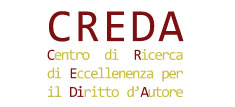Il Consiglio dell’Autorità per le Garanzie nelle Comunicazioni, in data 30 aprile 2024, ha dato…
The impact of peaceful coexistence in the assessment of likelihood of confusion: a new decision from the General Court
di Riccardo Perotti (via Iplens.org)
In the Rioja Alta case (full text here), concerning the conflict between the “VIÑA ALBERDI” community trademark and the prior German trademark “VILLA ALBERTI” (both registered and used for wines), the General Court tackled the issue of peaceful coexistence as a factual circumstance which may rule out the likelihood of confusion.
The General Court has not actually stated anything new in the case at stake. It has simply repeated principles already expressed by previous judgments. And yet the decision is interesting because the Court has carefully assembled those principles, providing a generally applicable list of factors to be taken into account when assessing the impact of coexistence of trademarks in evaluating the likelihood of confusion, i.e. the adverse effects on the “essential” function of trademarks (the distinctive function: see ECJ, C-206/01, Arsenal, par. 51). Such factors include:
1) the fact that the trademarks in conflict were known by the relevant public, and thus perceived as indicators of different origins, prior to the registration of the contested trademark (par. 80);
2) the duration of the coexistence (par. 80); and
3) the absence of litigation regarding the coexisting trademarks (par. 82).
Although the decision did not deal with the possible impact of coexistence in the assessment of unfair advantage and detriment, it seems reasonable to assume that a peaceful coexistence may have an impact on the acknowledgment of such elements too and, therefore, that the above “coexistence test”, with small amendments, may also be applied to the assessment of the adverse effects on trademarks’ “non essential” functions (and namely the functions of “communication, investment or advertising“: see ECJ, Interflora, C-323/09; ECJ, L’Oréal, C-487/07).
For a critical review of EU case law and legislation on trademarks and coexistence, see Pennisi, Tutela del marchio e azioni ritardate: dalla preclusione per tolleranza alla preclusione per coesistenza, in Riv. Dir. Ind., 2015, p. 18 ff., whereby the ECJ case law (and particularly the C-482/09, Anheuser-Busch, decision) laid down the basis for a “limitation as a consequence of coexistence” doctrine.
General Court (Fourth Chamber),30 June 2015, T-489/13, La Rioja Alta, SA v OHIM
20 luglio 2015








